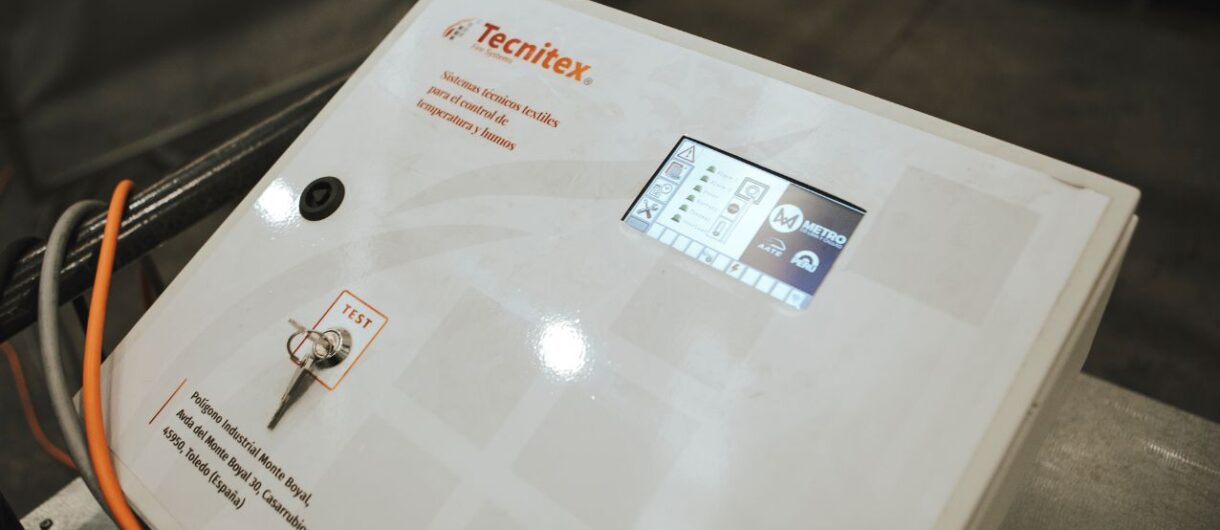
Fire Protection Maintenance: How Does it Affect Fire Curtains?
When Tecnitex presents a proposal for a fire sectorization project, one of the questions most frequently asked by our clients is what type of maintenance the installation must have.
Today, we are going to address the most common criteria when carrying out proper maintenance of fire sectorization systems.
What do the maintenance requirements for fire curtains involve according to the standards?
NFPA 80: the most specific standard
International standards such as NFPA 80 stress the importance of continuous maintenance of fire barriers.
According to this standard, inspections must be carried out by a sufficiently qualified owner or occupant of the building, or by a property manager, that is, an inspector who will also be in charge of keeping records of these reviews.
But what does the NFPA 80 standard mean by “qualified person”? It defines such a person as “someone who holds a recognized degree, certificate, professional position, or skill, and whose knowledge, training, and experience has allowed them to demonstrate the ability to deal with the subject matter, work, or project.”
NFPA 80 details maintenance requirements covering the entire process, that is, from initial installation and testing to maintenance and subsequent testing, including any obstructions that might prevent the curtains from being used correctly.
ISO 21524:2021
Another international standard for fire curtains is ISO 21524.
Specifically, its Annex O carefully details the requirements regarding the inspection, testing and maintenance of fire curtains.
The UNE 23740-2 standard
In Spain, the UNE 23740-2 standard indicates the maintenance requirements that fire curtains have over time.
Firstly, maintenance is to be conducted on a quarterly basis by both specialized and non-specialized professionals.
Secondly, once a year, a more thorough maintenance review is to be conducted. As this review is more technical and advanced, it does require the action of a duly qualified professional with complete and up-to-date knowledge about the product.
The standard also requires that these operations be recorded in a specific book for the maintenance of fire curtains, and this book must be kept for at least 10 years.
BS 8524-2
Returning to the national standards, it is worth noting the indications of the British standard BS 8524-2, which also precisely details many aspects of the maintenance of fire curtains.
On the one hand, it also emphasizes the temporary aspect, with an obligation of at least one annual maintenance review, inspection and test to guarantee the proper functioning of the sectorization system. And as in UNE 23740-2, its execution is also necessary by a specialist who can confirm that the fire curtains work correctly”, keeping a precise record of each test.
In addition, this standard takes into account other aspects such as obstructions or possible changes in the design of the buildings, as well as a change in the usual activity within them, factors that may prevent the proper functioning of the installed sectorization systems.
The importance of product quality and after-sales service of fire curtains
Tecnitex carefully implements each part of the process, as we are perfectly aware of the importance of each step we take in a project, from design and manufacturing to after-sales service.
It is of the utmost importance that industry leaders invest in top-quality products that guarantee compliance with regulations, and undertake those maintenance reviews necessary to guarantee the safety of their facilities.
For this reason, the Tecnitex team puts its considerable expertise at the service of our clients to ensure correct training in the installation, use and maintenance of sectorization systems, collaborating with them in the planning, execution and supervision of projects, and thus guaranteeing the success and durability of our products.
Are you interested in a tailor-made fire sectorization project? Contact us.